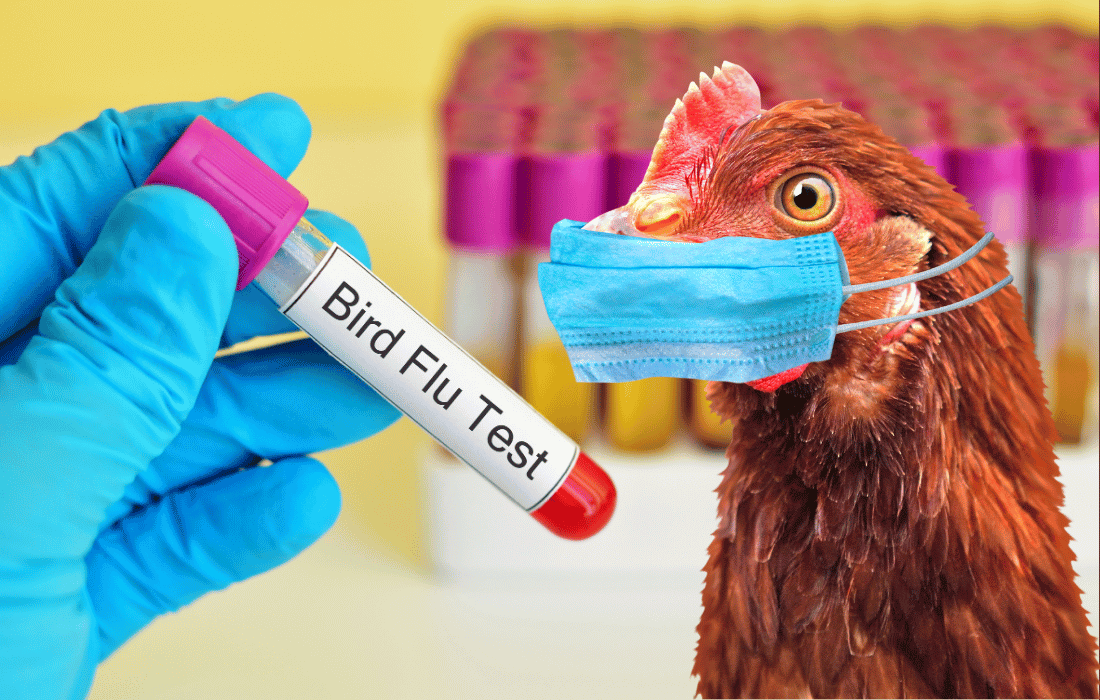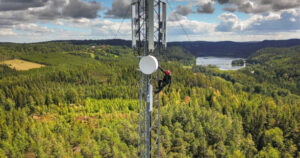Ah, the humble chicken and its egg. Once the cornerstone of a hearty breakfast and a backyard homesteader’s pride, these cluckers are now at the center of a poultry panic. With the recent surge in bird flu cases, the scramble (pun intended) to control the outbreak has led to some eggs-traordinary measures and conspiracy theories. Is there more to this than meets the eye? Let’s dive into the official story, the WEF’s meatless agenda, and the growing movement towards self-sufficiency.
The Official Story: Bird Flu Returns
Recent headlines have been dominated by the resurgence of bird flu, with outbreaks reported in several countries. In Australia, bird flu was confirmed at an eighth Victorian farm, leading to the euthanization of chickens to prevent the spread of the highly pathogenic H7N3 strain. Chief Veterinary Officer Graeme Cooke emphasized that these measures show the effectiveness of surveillance and containment efforts. However, the toll has been significant, with more than one million birds destroyed in Victoria alone.
While the risk to humans is considered extremely low, the impact on poultry farming has been severe. Movement restrictions and biosecurity measures have been implemented to curb the spread, causing disruptions in the supply chain and sparking fears among consumers. Major supermarkets like Coles have even placed purchase limits on eggs, further fueling the panic.
The WEF’s Meatless Agenda: From Birds to Bugs
Enter the World Economic Forum (WEF), the global think tank that never misses an opportunity to weigh in on our lifestyle and dietary habits. The WEF has been vocal about the need to shift towards more sustainable food sources, often highlighting the environmental impact of livestock farming. Their solution? Bugs, lab-grown meat, and a significant reduction in meat consumption.
Insects, according to the WEF, are an efficient and environmentally friendly source of protein. Companies like Ÿnsect are pioneering the industrial-scale farming of mealworms, touting benefits such as reduced CO2 emissions, lower land use, and high nutritional value. However, despite the hype, insects do not offer the same nutrient profile as traditional, high-quality meats. A grass-fed, grass-finished ribeye, for example, provides a rich array of essential nutrients that crickets simply cannot match.
But it’s not just bugs on the menu. The WEF is also pushing for the adoption of plant-based meat substitutes. Impossible Foods and Beyond Meat have received substantial funding from high-profile investors, including Bill Gates and Google Ventures. These companies are creating plant-based products that mimic the taste and texture of real meat, aiming to reduce the reliance on animal farming and its associated environmental costs.
The Fear Factor: Bird Flu and Beyond
So, how does bird flu fit into this narrative? Some might argue that the timing of the bird flu outbreaks is rather convenient for those promoting a meatless agenda. As fear of the virus spreads, consumers may be more inclined to avoid poultry products, thereby accelerating the shift towards alternative proteins. One might say it’s a classic case of “never let a good crisis go to waste”.
Moreover, the emphasis on biosecurity and the destruction of millions of birds could be seen as a way to reinforce the message that traditional farming practices are unsustainable and risky. The WEF’s agenda aligns perfectly with these developments, suggesting that a move away from conventional meat is not just beneficial but necessary for the planet’s future.
Homesteading: A Growing Movement
Amidst all this, there’s a growing movement towards homesteading and self-sufficiency. With wars, economic instability, and environmental concerns, more people are turning to their backyards for food security. The appeal of growing your own food, raising chickens, and reducing dependence on industrial food systems is stronger than ever.
Homesteading offers numerous benefits: fresher food, greater control over what you eat, and a deeper connection to the environment. It’s a way to take back some control in an increasingly uncertain world. However, this movement is not without its challenges. Critics argue that small-scale farming can’t feed the world’s growing population, and there’s ongoing debate about the environmental impact of urban gardening.
The Propaganda Machine: Urban Gardening Under Attack
In a surprising twist, recent research claims that urban gardening is worse for the climate than industrial agriculture. The study argues that the inputs required to create and maintain high-end urban gardens—such as raised beds, landscaping materials, and watering infrastructure—result in higher carbon emissions than traditional farming methods.
This kind of research can be used by policymakers to justify restrictions on urban gardening, portraying it as another harmful practice that needs to be regulated. It’s a narrative that seems designed to discourage self-sufficiency and keep people dependent on larger food systems.
The Simplicity of the Past
Before supermarkets and industrialized farming, society thrived on simpler, more sustainable practices. People grew their own food and raised their own livestock, creating a direct connection between what they ate and how it was produced. This lifestyle fostered healthier communities and more resilient food systems.
In contrast, modern industrial farming practices often involve packing animals into tight, unsanitary conditions. Chickens, for example, can be fed the cheapest and most toxic feed options available, leading to health issues and, in extreme cases, even cannibalism among the birds. These unhealthy animals contribute to an unhealthy society, highlighting the importance of high-quality, organic, and pasture-raised eating, especially for chickens and eggs. Chickens are often considered “dirty birds” due to the conditions in which they are raised, making the quality of their diet and living environment even more crucial.
Irony in Demonizing Traditional Methods
It’s ironic that what has worked for cultures for centuries—growing your own food and livestock—is now being demonized. Instead, we are encouraged to rely on what is available at the grocery store. But what happens when that grocery store can’t get food anymore? Those with home gardens or livestock are suddenly seen as a threat to the new agenda.
Historically, self-sufficiency was a virtue. Families relied on their gardens and animals for sustenance, fostering a deep understanding of nature and sustainable living. Today, however, policies and narratives seem to push against these traditional practices, favoring a more centralized and controlled food system. This shift raises questions about who benefits from such changes and what the long-term implications might be.
The New Food System: A Controlled Future?
As we look to the future, it’s worth considering the broader implications of these developments. The push for a meatless diet, the regulation of urban gardening, and the response to bird flu all point towards a more controlled and centralized food system. While the official story focuses on sustainability and public health, there’s an underlying question of who benefits from these changes.
The WEF’s vision of the future involves advanced technology and large-scale solutions, often at the expense of individual autonomy. Whether it’s bugs, lab-grown meat, or restrictions on gardening, the trend is towards greater control over what we eat and how it’s produced.
The Insect Solution: High Protein, Low Impact?
The concept of eating insects is not new, but it has gained traction in recent years as a sustainable alternative to traditional livestock. According to the WEF, insects are a credible and efficient source of protein, requiring fewer resources than conventional farming.
However, despite the environmental benefits they claim, it’s crucial to recognize that insects do not offer the same nutrient profile as traditional, high-quality meats. A grass-fed, grass-finished ribeye, for example, provides a rich array of essential nutrients that crickets simply cannot match. While insects might serve as a supplemental protein source, they are not a substitute for the nutritional benefits of well-raised animal products.
Lab-Grown Meat: The Future of Protein?
Another futuristic solution proposed by the WEF is lab-grown, or cultured, meat. This technology involves growing meat in a lab from animal cells, creating a product that is identical to conventional meat without the environmental impact. Cultured meat has already attracted significant investment, with start-ups in this space receiving millions in funding.
However, lab-grown meat is not without its controversies. Critics argue that lab-grown meat is full of genetically engineered ingredients and lacks the natural complexity of traditional meat. Moreover, there are concerns about the long-term health effects of consuming such products. While lab-grown meat may one day closely resemble healthy beef, it never will be.
The Shift to Meatless: Market Trends
The shift towards meatless alternatives is already underway, with market trends indicating a growing demand for plant-based and insect-based proteins. In the United States, two-thirds of consumers report eating less meat, driven by concerns about health and cost. In the UK, nearly a third of consumers are reducing meat consumption due to its carbon footprint.
The global market for meat substitutes was valued at $4.6 billion in 2018 and is expected to reach $6.4 billion by 2023. Companies like Impossible Foods and Beyond Meat are leading the charge, creating products that closely mimic the taste and texture of real meat. These companies have received substantial funding from investors, signaling confidence in the future of alternative proteins.
Conclusion: Just a Cluckin’ Conspiracy?
Is the bird flu outbreak part of a larger plot to steer us towards a meatless future? Are the WEF and other global organizations using environmental concerns to push an agenda that benefits big business and reduces individual freedom? It’s hard to say for sure, but the pieces of the puzzle certainly fit together in intriguing ways.
For now, it’s clear that our food system is undergoing significant changes, and those who value self-sufficiency and traditional farming methods need to stay vigilant. Whether you’re raising chickens, planting a garden, or just trying to navigate the latest food scare, the key is to stay informed and critically evaluate the information presented to you.
After all, in a world where even your backyard garden can be labeled as bad for the climate, it’s always good to keep an eye out for fowl play.
As always, do your own research and critical thinking to decide what you think about this. Don’t take my word for it. I don’t know anything; I’m just a guy observing our world change in real-time while taking the time to write about it.







